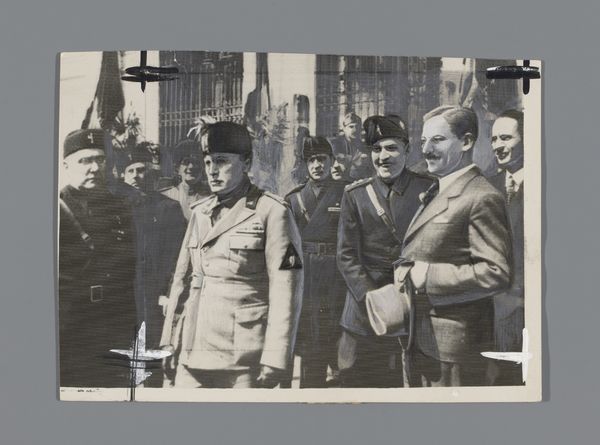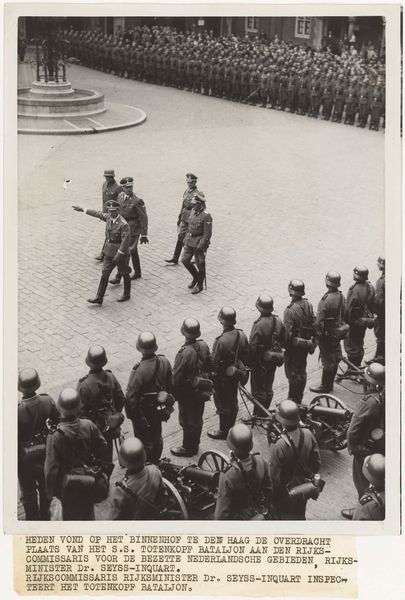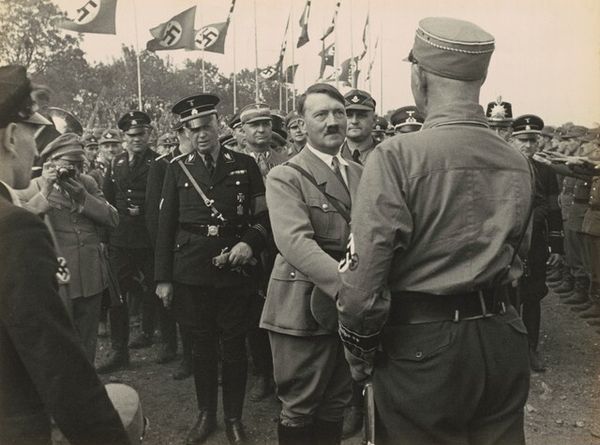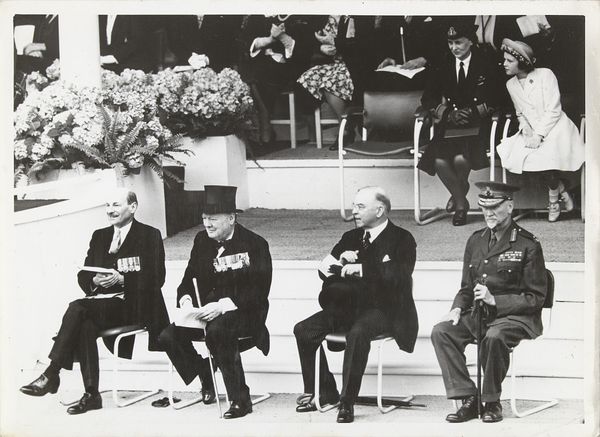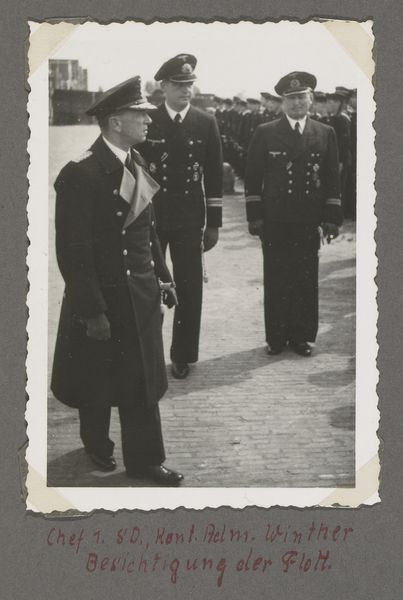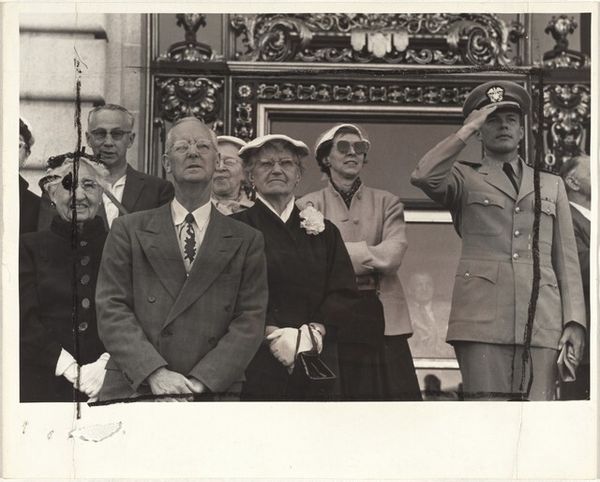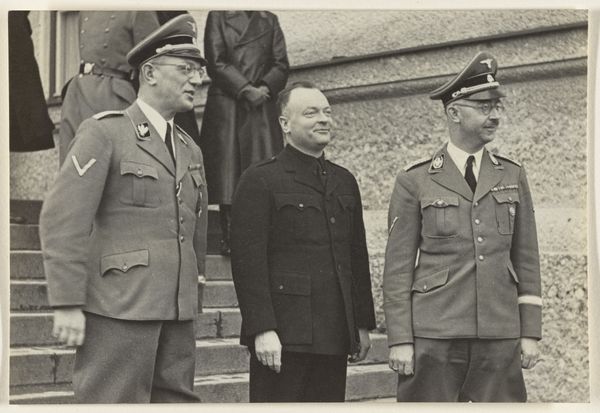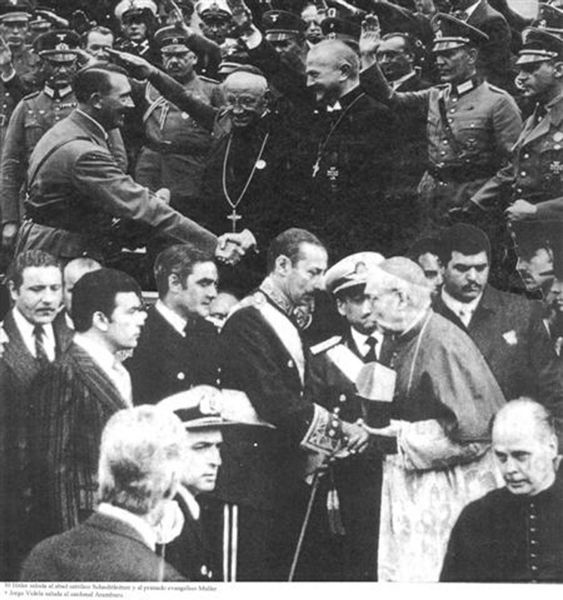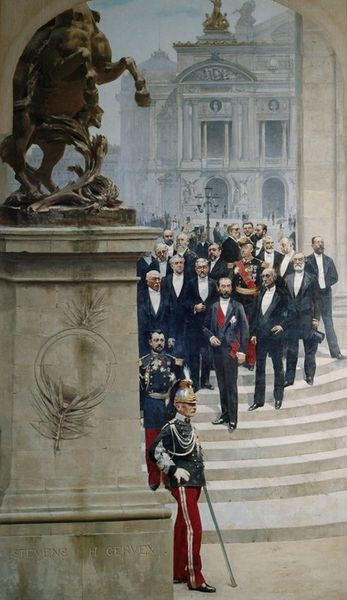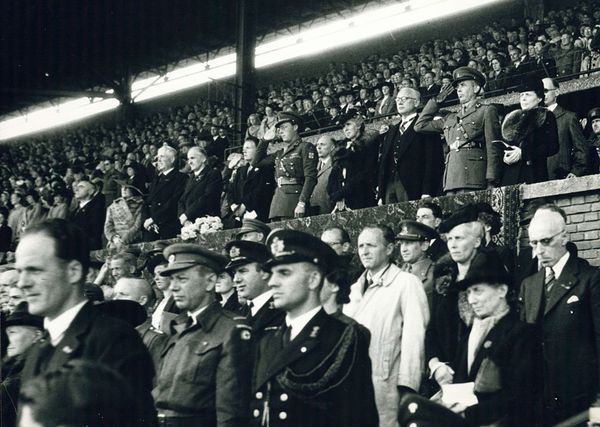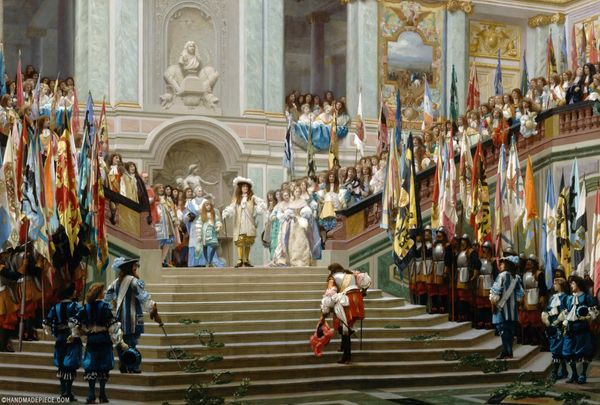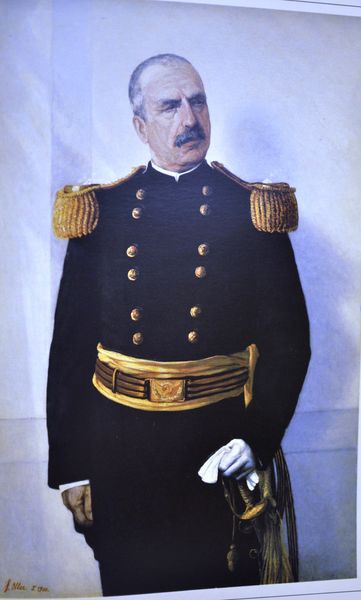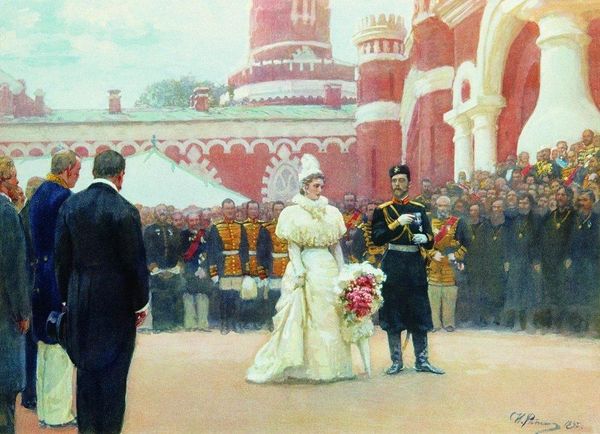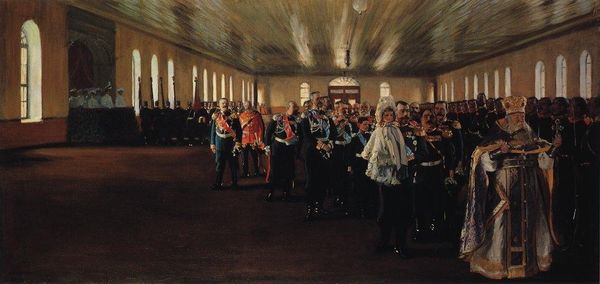
painting, oil-paint
#
portrait
#
painting
#
oil-paint
#
soviet-nonconformist-art
#
socialist-realism
#
oil painting
#
group-portraits
#
history-painting
#
portrait art
Copyright: Dmitry Nalbandyan,Fair Use
Editor: Dmitry Nalbandyan's "Reception in the Kremlin, May 24, 1945," painted in 1947 using oil paint, strikes me as a very staged and deliberate depiction of power. What is your perspective on its representation of history? Curator: It’s crucial to understand how this image functioned within the context of Soviet Socialist Realism. Consider the Kremlin, a potent symbol of Soviet authority, and the carefully orchestrated scene. This wasn't just about documenting an event; it was about crafting a very specific narrative. How does the visual hierarchy reinforce this? Editor: I notice Stalin is centrally placed and slightly ahead of everyone, but what's fascinating is the sheer number of people present, both on the stairs and observing from above. Curator: Precisely! Think about the public role of art during this period. This painting aimed to project an image of unity, strength, and the legitimacy of the Soviet regime, both to its citizens and the world. The abundance of figures signals broad support, doesn’t it? Also, note how it adopts a certain classical painting language but directed to contemporary issues. Editor: It definitely feels propagandistic, less about realism and more about idealizing the Soviet government. But were there dissenting voices in art during this time? Curator: Yes, there were movements like Soviet Nonconformist Art which offered alternative narratives, often operating underground. These challenged the officially sanctioned style and exposed the politics embedded in imagery like Nalbandyan's. Knowing about those helps to better understand just how purposeful paintings like this were in solidifying the cultural and political power. How do you now feel about the scale, the chosen setting? Editor: Understanding the historical context of Socialist Realism definitely changes my perspective. The scale isn’t just about grandiosity, it is there to reinforce the power structures within the Soviet Union at that time. Curator: Exactly! The painting is not merely a depiction, it's an active participant in shaping history and how it's remembered, especially given that Nalbandyan would go on to produce propaganda for decades to come. Editor: Thank you; thinking about how museums can challenge or reproduce that political and social power makes perfect sense now. I appreciate how history impacts visual understanding.
Comments
No comments
Be the first to comment and join the conversation on the ultimate creative platform.
